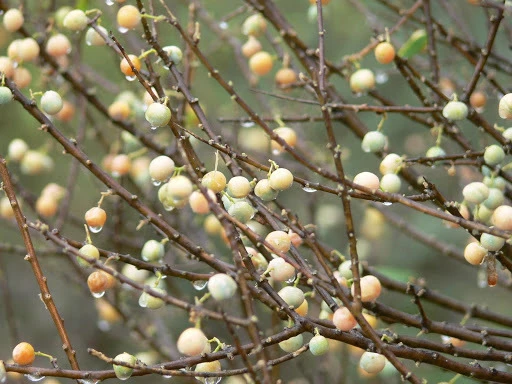Shepherd Tree
(Boscia albitrunca)
Shepherd Tree (Boscia albitrunca)
/
/

© 116916927065934112165
CC BY 4.0
Image By:
© 116916927065934112165
Recorded By:
Copyright:
CC BY 4.0
Copyright Notice:
Photo by: © 116916927065934112165 | License Type: CC BY 4.0 | License URL: http://creativecommons.org/licenses/by/4.0/ | Uploader: muir | Publisher: iNaturalist |

























Estimated Native Range
Climate Requirements for Hong Kong, Hong Kong, China
| This Plant | Your Site | Plant Suitability for Your Location | ||
|---|---|---|---|---|
| • Precipitation | 0" - 53" | 87" | Aquatic | Aquatic |
| • High Temp. | 73°F - 100°F | 88°F | Your summer temperatures are normal for this plant. | Excellent |
| • Low Temp. | 28°F - 61°F | 55°F | Your winter temperatures are normal for this plant | Excellent |
This plant may not grow well at your location - your precipitation is too high.
Summary
Boscia albitrunca, commonly known as the Shepherd Tree, is a deciduous tree native to arid savannas and semi-desert regions of southern and tropical Africa, particularly favoring hot, dry low-lying areas on calcareous (lime-rich) or rocky soils. It is known for its remarkable root system, which can extend down to 223 feet (68 meters), the deepest known for any plant, allowing it to access deep groundwater sources. The Shepherd Tree typically grows to about 33 feet (10 meters) in height and is characterized by its striking white to pale grey trunk, narrow oblanceolate leaves, and small, inconspicuous greenish-yellow flowers. The fruits are small, with brittle skins, and not particularly notable for ornamental purposes.
The Shepherd Tree is valued for its drought tolerance and ability to thrive in harsh environments, making it an important species for reforestation and land rehabilitation projects in arid zones. It provides essential forage for wildlife and livestock during dry periods. In cultivation, it requires minimal water once established, prefers well-drained soils, and can tolerate full sun to partial shade. It is also used in traditional medicine and as a coffee substitute due to its edible seeds. However, its deep root system can be problematic if planted near infrastructure.CC BY-SA 4.0
The Shepherd Tree is valued for its drought tolerance and ability to thrive in harsh environments, making it an important species for reforestation and land rehabilitation projects in arid zones. It provides essential forage for wildlife and livestock during dry periods. In cultivation, it requires minimal water once established, prefers well-drained soils, and can tolerate full sun to partial shade. It is also used in traditional medicine and as a coffee substitute due to its edible seeds. However, its deep root system can be problematic if planted near infrastructure.CC BY-SA 4.0
Plant Description
- Plant Type: Tree
- Height: 10-20 feet
- Width: 10-15 feet
- Growth Rate: Slow
- Flower Color: Green
- Flowering Season: Summer
- Leaf Retention: Evergreen
Growth Requirements
- Sun: Full Sun
- Water: Low
- Drainage: Medium, Fast
Common Uses
Drought Tolerant, Erosion Control, Low Maintenance
Natural Habitat
Native to arid savannas and semi-desert regions of southern and tropical Africa
Other Names
Common Names: Witgat, Caper Bush, Witgatboom
Scientific Names: Boscia albitrunca, Boscia albitrunca var. macrophylla, Boscia pechuelii, Boscia transvaalensis, Capparis albitrunca, Capparis oleoides, Capparis punctata
GBIF Accepted Name: Boscia albitrunca